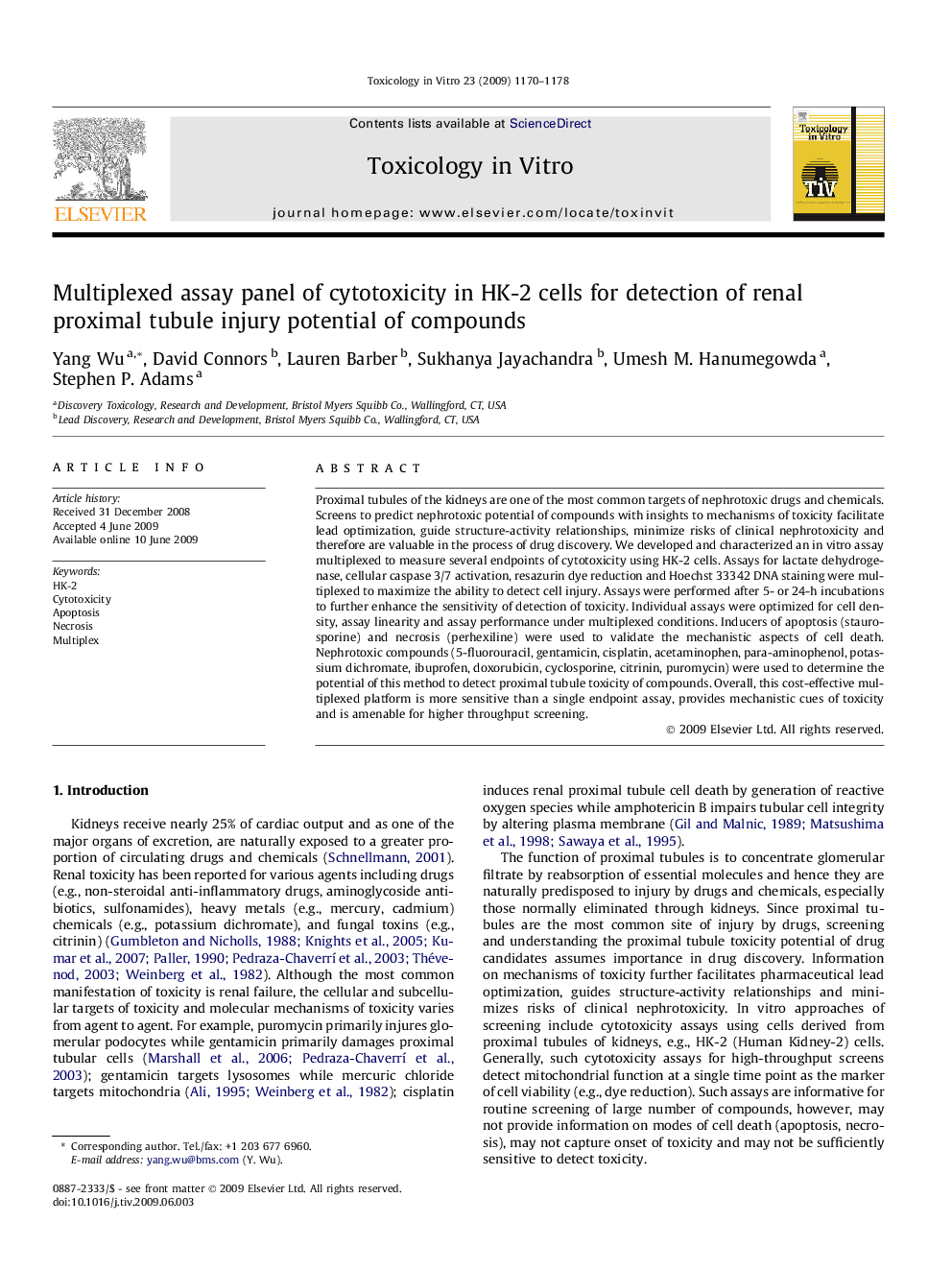| Article ID | Journal | Published Year | Pages | File Type |
|---|---|---|---|---|
| 2603003 | Toxicology in Vitro | 2009 | 9 Pages |
Proximal tubules of the kidneys are one of the most common targets of nephrotoxic drugs and chemicals. Screens to predict nephrotoxic potential of compounds with insights to mechanisms of toxicity facilitate lead optimization, guide structure-activity relationships, minimize risks of clinical nephrotoxicity and therefore are valuable in the process of drug discovery. We developed and characterized an in vitro assay multiplexed to measure several endpoints of cytotoxicity using HK-2 cells. Assays for lactate dehydrogenase, cellular caspase 3/7 activation, resazurin dye reduction and Hoechst 33342 DNA staining were multiplexed to maximize the ability to detect cell injury. Assays were performed after 5- or 24-h incubations to further enhance the sensitivity of detection of toxicity. Individual assays were optimized for cell density, assay linearity and assay performance under multiplexed conditions. Inducers of apoptosis (staurosporine) and necrosis (perhexiline) were used to validate the mechanistic aspects of cell death. Nephrotoxic compounds (5-fluorouracil, gentamicin, cisplatin, acetaminophen, para-aminophenol, potassium dichromate, ibuprofen, doxorubicin, cyclosporine, citrinin, puromycin) were used to determine the potential of this method to detect proximal tubule toxicity of compounds. Overall, this cost-effective multiplexed platform is more sensitive than a single endpoint assay, provides mechanistic cues of toxicity and is amenable for higher throughput screening.
